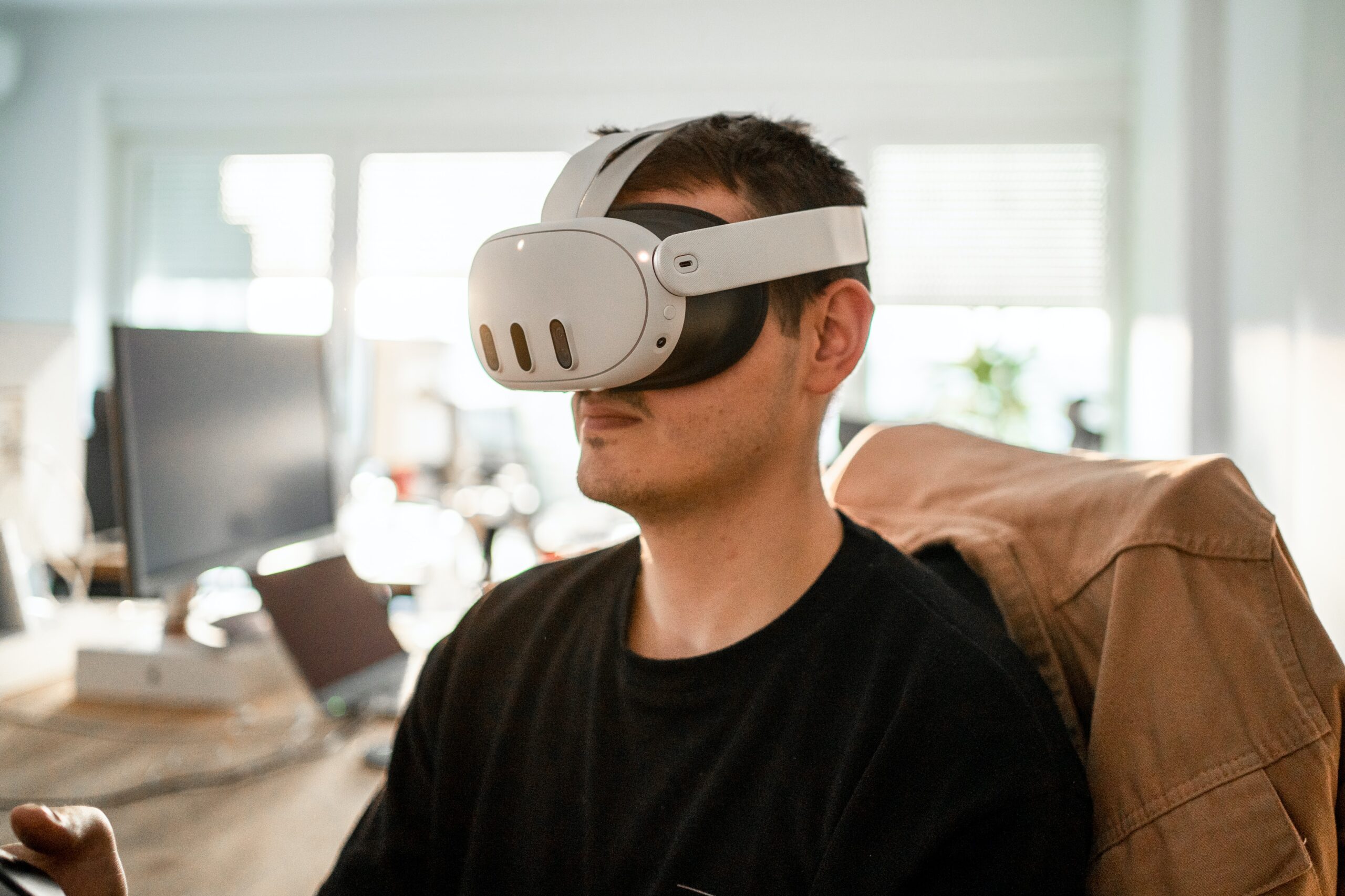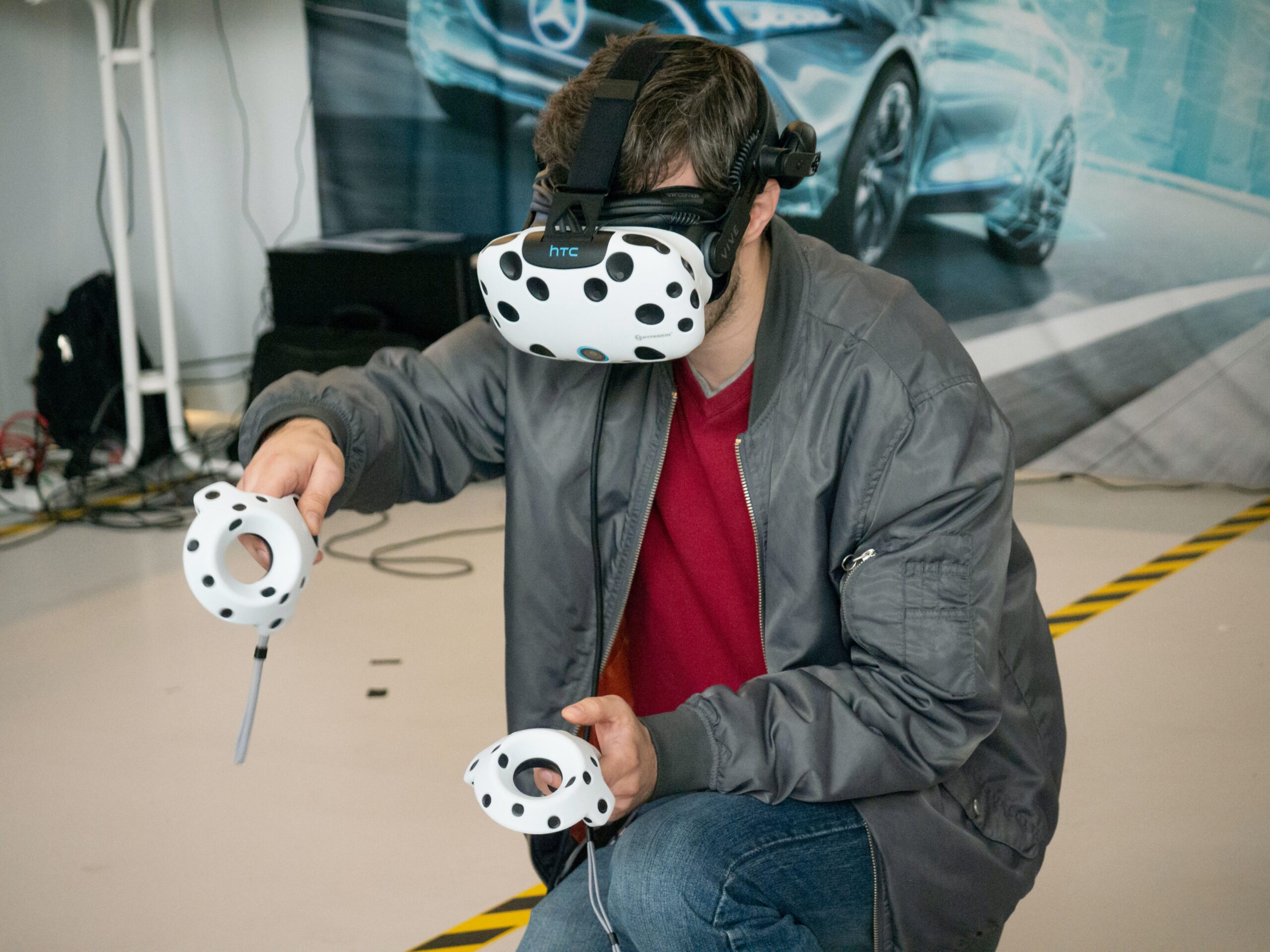Virtual Reality (VR) is changing the landscape in SaaS training and development. Everywhere you look, companies are bringing VR into their training programs. No more grappling with abstract ideas.
Now, employees dive right into lifelike scenarios. They face real-world challenges head-on. This immersion doesn’t just clarify software understanding. It sharpens real-time problem-solving skills too. In this article, we’ll unpack VR’s current impact on SaaS training. Plus, we’ll peek into what the future might hold.
How Did VR Cross Paths With SaaS Training and Development?
When we think of groundbreaking tech, Virtual Reality (VR) stands out. But how did it blend with Software as a Service (SaaS) training? Let’s break it down.
VR’s Humble Start
At first, VR was all about games. It took players to different worlds. Yet, as it grew, more people saw its wider uses. Why? It’s one thing to hear about an experience. Living it, even virtually, is different.
SaaS Shakes Things Up
On another front, SaaS was changing business tech. No more big software installs. With SaaS, tools live online. They get updates often. This means they change a lot. Training staff on ever-changing tools? That’s tough. Old-school workshops and manuals? Not enough.
VR Meets SaaS: The Aha Moment
Then, a thought: What if staff could train in a virtual world? They’d get a feel for the tools without real-world mess-ups. Say a salesperson needs to learn a new SaaS tool. With VR, they could practice handling customer chats, using the tool in real-time. Mistakes in VR don’t cost real money. Training becomes hands-on and risk-free.
First Movers Dive In
Some companies saw this and jumped in. They tried VR and AR in their business. Sure, they hit some bumps. Good VR isn’t cheap. And some employees scratched their heads at this “futuristic” method. But, the results spoke volumes. Staff learned faster. They felt surer. Their work got better.
Not Just for Training: Developers Jump Onboard
Developers saw potential too. They started using VR to test new features. Think about it: A developer can walk through their software in VR. They see how users might react. If something’s off, they spot it early. Teams also started problem-solving in VR. Imagine brainstorming in a virtual meeting room. Or tweaking a software feature and seeing real-time virtual reactions.
VR Features Making Waves in SaaS Training and Development
Virtual Reality (VR) isn’t just cool tech. For Software as a Service (SaaS) training and development, it’s game-changing. But what VR features are turning heads? Let’s dive in.
1. Immersive 3D environments: VR’s strength? It pulls users into another world. For SaaS training, this is gold. Trainees step into life-like digital spaces. They interact with software in a real-world setting, but it’s all virtual. So, if a new feature seems confusing, trainers can recreate real scenarios to make it clear.
2. Hands-on interactivity: VR isn’t a sit-back-and-watch show. It’s hands-on. This is big for SaaS. Trainees don’t just see software features. They use them, in a safe, digital space. Hands touch virtual controls. Eyes follow on-screen guides. Learning becomes doing. The result? Deeper understanding.
3. Real-time feedback: Mistakes happen. In VR training, they’re blessings. Why? Instant feedback. If an employee uses a feature wrong, VR can show the mistake right away. No waiting. No guesswork. Instant “Oops! Let’s fix that.”
4. Customizable scenarios: One-size-fits-all? Not in VR. Trainers can tailor scenarios for each learner. Let’s say one team struggles with a specific tool. In VR, trainers can create exercises just for that tool. Everyone gets what they need.
5. Multi-user collaboration: Training isn’t always solo. With VR, teams can learn together, even from miles apart. Picture a virtual meeting room. Staff from worldwide offices come together. They chat, share, and learn. All in one virtual space.
6. Gaze and gesture recognition: Modern VR spots where users look or how they move. For SaaS training, this is a peek into the user’s mind. Did a trainee hesitate before clicking a feature? Did their gaze wander, looking lost? Trainers see this. They can then offer help where it’s needed.
7. Scalable modules: Start small, think big. VR training modules can grow with a company. Got a small team? Use basic modules. As the team grows or software gets complex, add more modules. It’s training that scales.
8. Integration with real data: VR doesn’t live in a bubble. It can pull in real data. For SaaS developers, this is huge. They can see how real users might interact with their software, all in a virtual setting.
9. Portable learning: Goodbye, big training rooms. With VR headsets, training can happen anywhere. Got a break between meetings? Pop on a headset. Learn a new feature in a quiet corner. It’s learning on-the-go.
10. Lifelike simulations: This isn’t about cartoonish graphics. Today’s VR offers lifelike experiences. For SaaS training, it feels like the real thing. If a software tool links to, say, financial markets, trainees could stand in a virtual trading floor. It’s as real as it gets, without the real-world risks.
11. Adaptive learning paths: All trainees aren’t the same. VR knows this. It can track a user’s progress and adapt. Struggling with a module? VR can offer extra practice or tips. Breezing through? It can up the challenge.
12. Environment control: Noise. Distractions. In real-world training, they’re headaches. In VR? Gone. Users get a controlled, distraction-free space. They can focus 100% on learning.
13. Enhanced memory retention: It’s science. Doing beats just seeing. In VR, users don’t just watch. They act. They engage. This active role means they remember more, for longer.
14. Real-time updates: Software changes. VR keeps pace. Trainers can update VR modules as software evolves. No reprinting manuals. No long emails. Just update, and it’s ready to roll.
Steps to Adopt VR for Your SaaS Training and Development Program
Thinking of merging Virtual Reality (VR) into your SaaS training and development? Great idea! But, where to start? Let’s walk through it, step by step.
1. Define Your Goals
Start with the “why.” Why VR? Do you want faster onboarding? Fewer training errors? A deeper dive into complex features? Nail down your goals. For instance, if you want to cut down training time, your VR program might focus on intensive, short modules.
2. Pick the Right Gear
All VR headsets aren’t equal. Some are basic, some high-end. Consider your budget. Also, think of your needs. For simple tasks, basic headsets might do. But for intricate software demos? You might want clearer graphics and better interactivity. Example: Oculus Rift offers an immersive experience ideal for intricate training.
3. Craft Content with Experts
Don’t just jump in. Collaborate with VR and training pros. They’ll help shape content that fits your goals. If a feature of your SaaS product often confuses new users, create a module that breaks it down, step by step, in a virtual environment.
4. Pilot and Tweak
Launch a pilot program. Pick a small group. Let them dive into the VR training. Gather feedback. Was it too long? Too short? Confusing? Use this feedback. Refine your program.
5. Multi-user Collaboration is Key
VR shines when teams collaborate. Say you have devs in London and sales in New York. Host a joint VR session. They can discuss software tweaks in a shared virtual room, bridging the gap between function and frontline sales.
6. Monitor Progress
Don’t just set and forget. Track how trainees do. Which modules stump them? Where do they excel? Modern VR systems offer analytics. Use them. If one module sees a 90% fail rate, it’s a sign. Maybe it’s too hard, or perhaps it needs clarity.
7. Keep It Fresh
Software changes. So should your training. Regularly update VR modules to mirror SaaS updates. If you roll out a major product update, introduce a new VR module to match.
8. Consider Federated Learning
VR is cool. But it’s not always the answer. Mix it up. Maybe use VR for complex tasks and traditional methods for simple ones. Federated learning methods can offer a richer learning experience.
Tech Stack Essentials for VR in SaaS Training
Stepping into the world of Virtual Reality for SaaS training? You’ll need a solid tech foundation. Here’s your guide, broken down piece by piece.
1. VR Headsets: Your Window to Training
Choose your headset wisely.
- Tethered headsets like the Oculus Rift connect to PCs. They’re top-notch for graphic quality and immersive experience. Perfect for detailed SaaS demonstrations.
- Stand-alone headsets, such as Oculus Quest, work without PCs. They’re great for mobile teams or quick training setups.
- Smartphone headsets, like Samsung Gear VR, use your phone. They’re budget-friendly and suit basic training tasks.
2. Development Platforms: Building the VR World
To shape your VR training, you need powerful tools.
- Unity 3D stands out for flexibility. It’s challenging but rewarding. You can craft both simple and complex training modules here.
- Unreal Engine wows with visuals. If you want beautiful and captivating training environments, consider this.
- WebVR is for browser-based VR. Want your training without dedicated software? This is your pick.
3. Middleware & Tools: Your Building Blocks
These tools fill in the gaps and ease the development.
- SteamVR has a host of tools and content libraries. It fits with many VR headsets, offering flexibility.
- Oculus SDK is a must if you’re leaning towards Oculus devices. It tailors the experience, optimizing for these specific headsets.
4. 3D Modeling: Crafting Your Virtual Objects
Your VR world needs objects, buildings, and landscapes.
- Blender is a free, open-source tool. It does everything from texturing to shaping.
- Maya is for those wanting an upscale touch. It covers animation, rendering, and more.
5. Sound Matters: Audio Tools
Good VR engages both eyes and ears.
- FMOD pairs well with platforms like Unity. It lets the sounds react to users in real time.
- Wwise offers dynamic audio tools. Your VR training sounds as real as it looks.
6. Analytics: Measure the Impact
You want data to know your VR training’s success.
- Looker offers insights. Think user engagement and module success rates.
- Countly gives feedback instantly. If something’s off in your VR training, you know right away.
7. Storage: Keep Your VR Safe
Big VR modules need a secure home.
- Amazon S3 with Glacier offers both storage and peace of mind. Your VR content is safe and easy to access.
- Google Cloud Storage impresses with speed. Quick data access means no lag in training.
Challenges and Solutions for VR in SaaS Training
- High initial costs: VR demands a hefty initial investment. Equipment, software, and expert advice don’t come cheap. But you don’t have to go big right away. Start with budget-friendly headsets or smartphone VR options. As you see results, you can then scale up your investment.
- Technical issues: VR can throw technical curveballs. You might face software glitches or hardware problems. The solution? Have a VR tech team on standby. They’ll handle hiccups, manage updates, and ensure everything runs smoothly.
- Resistance from employees: New tech can intimidate. Some employees might cling to traditional training. So, introduce VR as an exciting option, not an obligation. Highlight its perks, like better memory retention. Positive results will speak for themselves.
- Health concerns: Extended VR use can tire users or even make them dizzy. The remedy is simple: keep VR sessions short and sweet. Encourage breaks and adjust VR settings for comfort. Listen to user feedback and tweak the experience accordingly.
- Content creation hurdles: Creating VR content is different. It’s more than just lectures in a virtual space. But don’t fret. Team up with VR content experts. They’ll help craft sessions that both inform and captivate.
- Scalability hitches: A growing company means changing training needs. What suits a small team might fall short for a larger crowd. The way out? Plan VR setups that can grow with you. Use cloud storage for expanding content needs. Ensure your VR system can accept updates and additions easily.
Conclusion
Integrating VR into SaaS training is a journey, not just a tech upgrade. While there are bumps along the way, the destination promises an effective and immersive training experience. So, gear up, adapt, and watch as VR elevates your training game to new heights.



